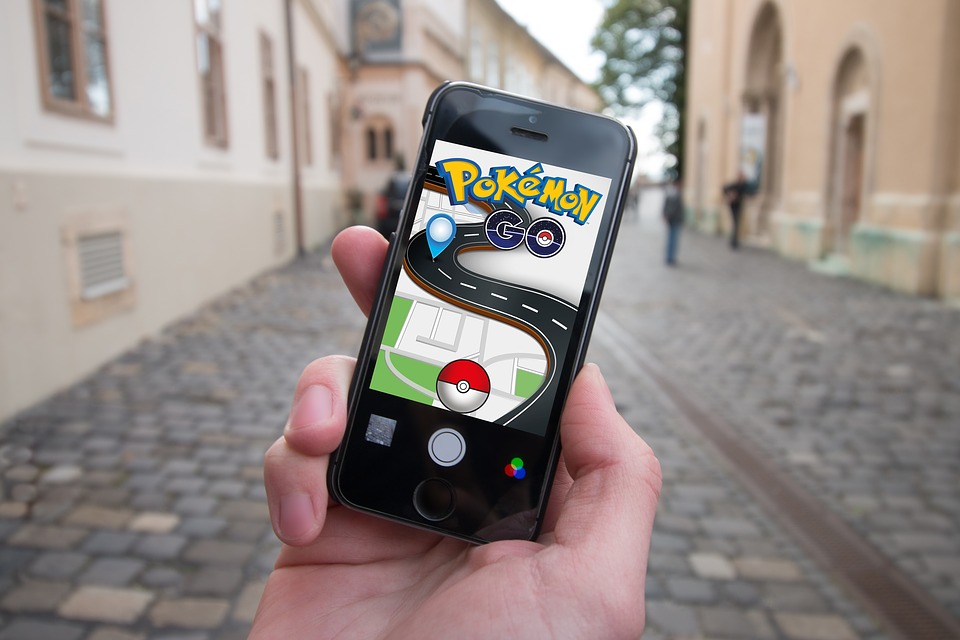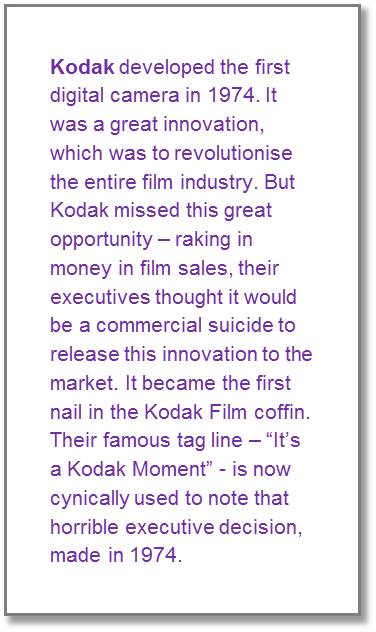 Arguably the most remarkable consumer innovation this year is Pokémon Go. This Virtual Reality simulation mobile game has taken the world by storm and people from all over are playing, on their own, in pairs or groups. Young kids and grownups alike, walking around the city streets, throwing imaginary balls at imaginary friends! Even though it was released in its beta phase, it's become the most talked-about game of 2016.
Arguably the most remarkable consumer innovation this year is Pokémon Go. This Virtual Reality simulation mobile game has taken the world by storm and people from all over are playing, on their own, in pairs or groups. Young kids and grownups alike, walking around the city streets, throwing imaginary balls at imaginary friends! Even though it was released in its beta phase, it's become the most talked-about game of 2016.
The game was released on the July 6, and within a week Nintendo had their best day in 33 years. The share price jumped close to 10% in 5 days, adding US$7.5 billion to its market cap. Within the first day of release, it was estimated that Nintendo earned over US$4,000,000 from this free game. Out of thousands of apps released to the Apple App Store and Android Play marketplace, what made this game so special? What can we make of this “overnight success”, this craze? Can we do the same? Well, maybe…
The secret of this game is not only based on the popular franchise, as many believe, but rather on Nintendo, the company that published it in the first place. Nintendo didn't actually create the VR game, rather they heavily invested in Niantic, an Augmented Reality outfit which spun off Google in late 2015. With all due respect, Niantic is just a momentary execution. Unlike many of their other ventures, Nintendo didn’t develop that expertise in-house. They bought it. Although they consider themselves a tech company (Consumer Electronics, to be precise), and have been for over 40 years, we must remember that historically, Nintendo is a gaming company. We must also remember that the Pokémon franchise has been around since 1996, and  in the past 20 years, Pokémon has released:
in the past 20 years, Pokémon has released:
• 73 games, selling over 260 Million units worldwide
• 800 episodes of a cartoon TV show
• 18 films
• 21.5 billion (with a B!) trading cards
• 1 Superbowl commercial, and
• 718 Pokémons.
Overnight success, ha??
And to add to the ongoing success of the Pokémon franchise, the app itself wasn’t born yesterday either: John Hanke (the founder of Niantic) started his journey in 1996, creating his first MMO (Massive Multiplayer Online game), going on to build the foundation for Google’s geo-technology (Google Earth, Google Maps & StreetView), and playing the 2014 Google’s famous April Fool’s prank, getting people to hunt Pokémons in the real world.
Nintendo, the leader
But it’s not just about Pikachu. Nintendo is one of the pillars of the history of modern gaming. Founded in 1889, Nintendo’s humble beginning was in the playing cards industry. Fast forward 60+ years, the company realised the limitation of the playing cards business, and tried expanding into other industries, including a taxi service, hotels, food manufacturing, TV network, and other ventures – all eventually failed. During the 1960s, the company had their first go at the toy industry, and in the mid 70s introduced their first video game console. Nintendo was the first to launch a game console bundled with games. The company also pioneered the handheld electronic game console (Game & Watch), was the first company to produce a Virtual Reality game in 1995, and has a long list of innovative products, including the Wii & the Nintendo DS. Many of the innovative products failed. Some succeeded beyond belief and became popular enough to make the name Nintendo a household name for so many decades.
Iterations
No matter what technology it used, Nintendo was true to its core. Mario Brothers, Donkey Kong, and now Pokémons have become a part of our culture, like Disney and Marvel characters. With every new technological development, those characters were the core of those games. The technology has changed, even the delivery has changed, but the message has remained. This is one of the main contributing factors to the success of Pokémon Go. The same generation of folks who are currently enjoying Pokémon Go have started from the bottom of the gaming chain. They have always been there for us with every change, every evolution and every upgrade of technology so that we can enjoy our gaming even more.
Every company has to adapt to the changes surrounding it otherwise it will fade away and die. Nintendo didn’t only adapt – they’ve led those changes, and kept the competition on their toes.
For many years, they’ve been concerns that Nintendo is missing out on the mobile revolution. For many years, the company has resisted creating mobile apps and games. Many industry analysts who predicted the demise of Nintendo are now eating their words.
Nintendo thus fused Pokémon, a well-loved set of characters since the mid 90s, with the aspect of virtual reality to reenergise their core story. Players can enjoy the nostalgia of capturing Pikachu as they did in the previous Pokémon games, but now right in their backyard – literally.
How are you innovating?
Innovation doesn’t mean straying from your core – you can stick to your company values and customer promise, just with new offerings that adapt with the changing environment. Nintendo is the leader in gaming; they don’t follow trends – they set the trend! Pokémon Go is a great example of trendsetting, using new(ish) technology coupled with a core story, to create an overnight worldwide phenomenon.
What can you do to set the trend?
1. Articulate your core story. Find out what your clients love about you, and write it down.
2. Look around you. Discover new technologies, or innovative processes and business models, and see what can potentially work with your current offering.
3. Dare to try! Take small risks, and try different things – come up with ideas which your competition isn’t even dreaming of, and go for it! Different delivery method, different pricing formula, bundling of existing products… something new!
It’s ok to fail. It’s not ok not to try…
Connect with an innovation consultant to brainstorm new ideas